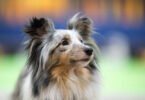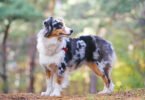The Great Dane: Majestic in Stature, Gentle in Spirit
The Great Dane, often referred to as the “gentle giant,” is a breed that commands attention with its impressive size, graceful appearance, and friendly demeanor. Known for being one of the largest dog breeds in the world, the Great Dane has a rich history, remarkable characteristics, and a gentle nature that defies its imposing stature. In this exploration, we delve into the origin, physical attributes, temperament, intelligence, exercise needs, grooming requirements, and overall health considerations that define the majestic Great Dane.
Origin and History
The Great Dane’s history can be traced back to ancient civilizations, where massive dogs resembling the breed were depicted in art and literature. However, the modern Great Dane as we know it today was developed in Germany during the 17th century. The breed’s ancestors were likely a combination of English Mastiffs and Irish Wolfhounds, resulting in a dog with a commanding presence and impressive stature.
Originally, Great Danes were bred for hunting large game, such as boars, and later became estate guard dogs for European nobility. As their roles shifted, Great Danes found a place in the homes of aristocrats, where they became beloved companions. Over time, the breed’s gentle nature and affectionate temperament endeared them to families around the world.
Physical Characteristics
The Great Dane is known for its massive size and well-proportioned build. Males typically stand between 30 to 34 inches at the shoulder, while females range from 28 to 32 inches. Despite their imposing size, Great Danes should have a balanced and elegant appearance, with a long, arched neck, deep chest, and a powerful yet graceful stride.
The breed’s coat is short, dense, and comes in various colors, including fawn, brindle, blue, black, and harlequin (white with irregular black patches). Great Danes have a distinctive, square-shaped head with a pronounced stop, a strong, deep muzzle, and ears that may be cropped or left natural. The breed’s eyes are expressive and convey a gentle, friendly expression.
Temperament and Personality
Great Danes are often described as gentle giants, and their temperament reflects their imposing yet affectionate nature. Despite their size, Great Danes are known for being friendly, sociable, and good-natured. They typically form strong bonds with their human family members and are known to be good with children, making them excellent family pets.
While Great Danes have a calm demeanor, their presence alone can serve as an effective deterrent to intruders due to their imposing size. Early socialization is important to ensure that they are well-behaved and comfortable around other dogs, animals, and people.
Intelligence and Trainability
Great Danes are intelligent dogs with a willingness to please their owners. While they may have a laid-back personality, they respond well to positive reinforcement training methods. Consistency, patience, and gentle guidance are key elements in training a Great Dane, and early training is essential to ensure they grow into well-mannered adults.
Despite their intelligence, Great Danes may have a stubborn streak, so a firm yet gentle approach is recommended. The breed’s size makes it crucial to establish good manners and basic obedience commands early on. Positive experiences with training contribute to a well-adjusted and obedient Great Dane.
Exercise Needs
Despite their large size, Great Danes have moderate exercise requirements. While they may not be as energetic as some smaller breeds, regular exercise is important to keep them physically and mentally stimulated. Daily walks, playtime, and a secure outdoor area for them to stretch their legs contribute to their well-being.
Great Danes are not typically known for high-intensity activities, but they may enjoy activities such as gentle jogging, obedience training, or even participating in canine sports like agility. It’s important to monitor their activity levels, especially during their growth stages, to avoid joint stress and other health issues associated with their size.
Grooming and Coat Care
Great Danes have a short coat that is relatively low-maintenance. Regular brushing helps keep their coat healthy and reduces shedding. Due to their short hair, Great Danes are not prone to matting, and they typically do not have a strong doggy odor.
Basic grooming practices, such as nail trimming, dental care, and routine ear cleaning, are important for the overall health and well-being of a Great Dane. Additionally, their large size may make them more prone to conditions like hip dysplasia, so maintaining a healthy weight through a balanced diet and regular exercise is crucial.
Health Considerations
Great Danes, like many large breeds, may be prone to certain health conditions. Common concerns include hip dysplasia, bloat (gastric torsion), heart issues, and certain genetic conditions. Regular veterinary check-ups, a balanced diet, and maintaining a healthy weight contribute to the overall well-being of a Great Dane.
Due to their rapid growth during puppyhood, it’s important to monitor their diet to prevent excessive growth, which can contribute to joint issues. Responsible breeding practices, including health screenings for potential genetic issues, are crucial for producing healthy Great Dane puppies.
Conclusion
In conclusion, the Great Dane stands as a majestic and gentle giant, combining an imposing presence with a loving and friendly disposition. From their historical roles as hunting and guard dogs to their modern-day position as cherished family companions, Great Danes embody a unique combination of strength, elegance, and affection.
Whether providing a sense of security, forming strong bonds with their families, or simply being a gentle presence in the home, Great Danes continue to capture the admiration of dog enthusiasts worldwide. Their regal appearance and gentle nature make them not only a stunning breed but also a wonderful addition to families seeking a loyal and affectionate canine companion.







[…] Doberman’s short coat is relatively low-maintenance. Regular brushing helps keep their coat clean and reduces shedding. As with any breed, basic […]